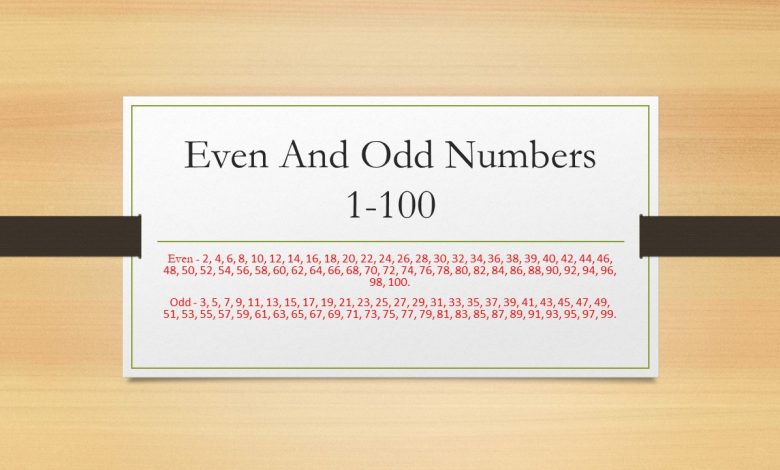Even And Odd Numbers With Examples Up To 100

Identifying even and odd numbers are topics in the mathematics scheme of work for primary school pupils. And in most cases, their teachers will want them to identify even and odd numbers from 1-100.
Even numbers can be easily divided by 2 without giving any remainder. They can also be referred to as multiples of 2.
For example, from 1-100, the even numbers are 2, 4, 6, 8, 10, 12, 14, 16, 18, 20, 22, 24, 26, 28, 30, 32, 34, 36, 38, 39, 40, 42, 44, 46, 48, 50, 52, 54, 56, 58, 60, 62, 64, 66, 68, 70, 72, 74, 76, 78, 80, 82, 84, 86, 88, 90, 92, 94, 96, 98, 100.
From the above example, you will discover that if any numbers are divided by 2, the remainder will be zero (0) – meaning it has no remainder.
Odd numbers are numbers that will give a remainder when divided by 2. For example, if you divide 3 by 2, it will give a remainder of 1. Also, dividing 5 by 2 will give a remainder of 1 (5 -:- 2 = 2 remainder 1). So, 3 and 5 are odd numbers.
Examples of odd numbers from 1-100 are 3, 5, 7, 9, 11, 13, 15, 17, 19, 21, 23, 25, 27, 29, 31, 33, 35, 37, 39, 41, 43, 45, 47, 49, 51, 53, 55, 57, 59, 61, 63, 65, 67, 69, 71, 73, 75, 77, 79, 81, 83, 85, 87, 89, 91, 93, 95, 97, 99. If you divide any of these numbers by 2, it will leave a remainder.
Read: Prime factorization with examples
